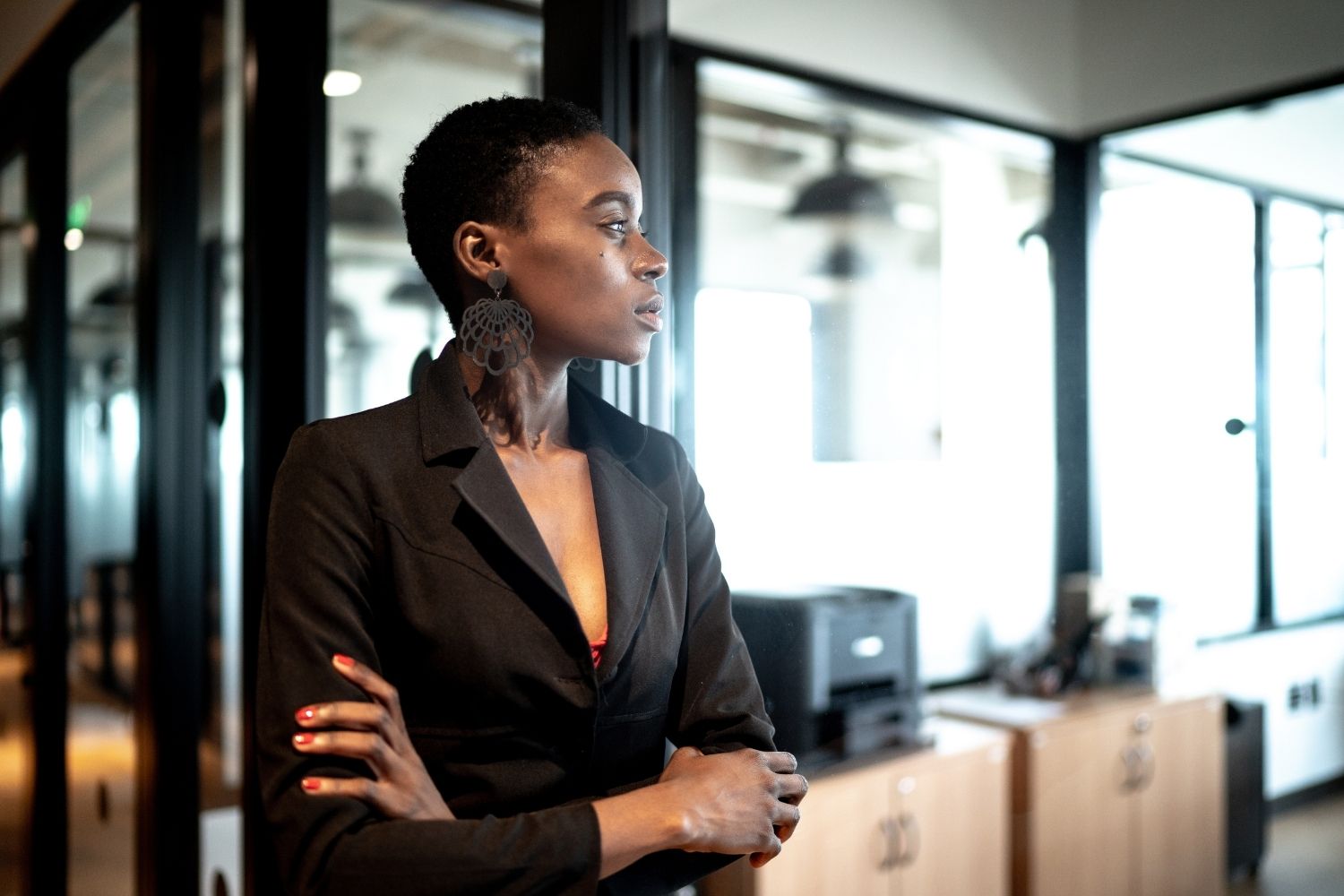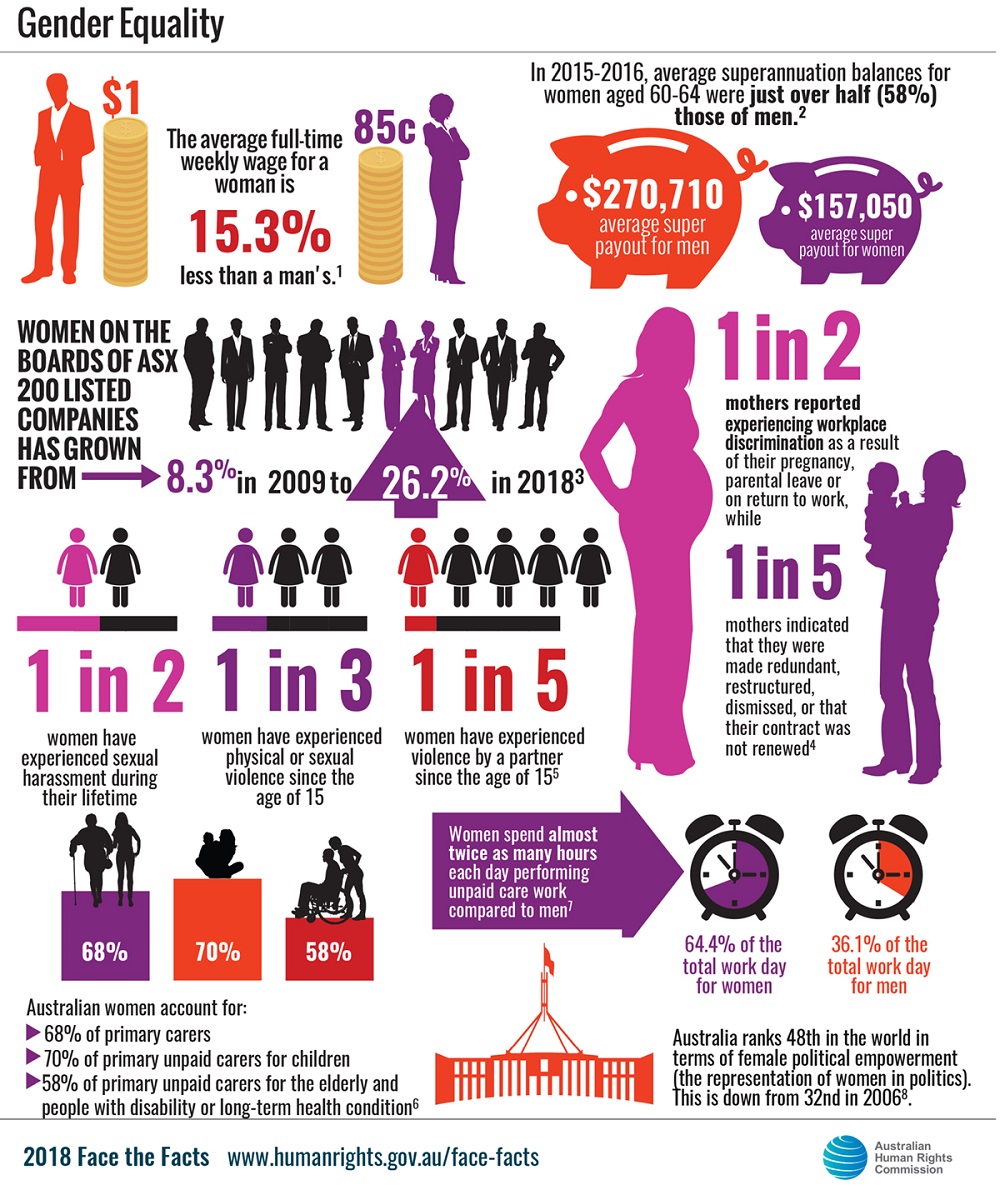It has been more than three decades since the Sex Discrimination Act came into force in Australia, but we still have a long way to go before we stamp out gender inequality.
WATCH: Meghan Markle campaigns for gender equality in India
Gender inequality acknowledges that women and men are not equal in society, and the most recent Australian stats released for Equal Pay Day 2020 reinforce this.
According to the Australian Human Rights Commission, the average full-time weekly wage for a woman is more than 15 percent less than a man’s full-time pay. That means that on average, Australian women have to work an extra 56 days per year to earn the same pay as men for doing the same tasks.

This year, Equal Pay Day falls on November 2nd. Last year, it was the 28th August, marking the 59 additional days from the end of the previous financial year that women must work to earn the same pay as men.
On average, full-time working women earned $1,558.40 a week, while men earned $1,812.00, with the full-time average weekly earning difference being $253.60.
Those figures aside, women continue to suffer discrimination in the workplace.
Half of all mothers in the workplace have reported discrimination as a result of their pregnancy and parental leave, and 20 per cent of mothers reported they were made redundant, dismissed, or placed in a different position as a result of being pregnant or having had a baby.

Gender inequality prevails on the domestic front too.
Most primary unpaid carers of children are women (70 per cent). And compared to men, women spend almost twice as many hours each day performing unpaid care work.
Still, there are signs that the culture is changing, even if at a glacial pace.
The number of women on the boards of ASX-listed companies grew from 8.3 percent in 2009 to 26.2 percent in 2017.
And research shows that 90 per cent of Australian men and women believe that men should be as involved in parenting as women.

Meanwhile, many women are taking up the fight to bring about gender equality in Australia.
Brisbane woman Madeline Price is the founder and national director of the One Woman Project, a not-for-profit organisation dedicated to providing quality education about gender equality.
Its mission statement: “We believe that the first step to ending global gender inequality is to educate and upskill our young people to tackle it in their own local, national and international communities.”
There’s also the Equality Rights Alliance (ERA), which is Australia’s largest network that advocates “for women’s equality, women’s leadership and recognition of women’s diversity”.
They bring together 61 non-government organisations and social enterprises with a focus on the impact of policy or service delivery on women.

The influence of such organisations is needed more than ever.
Australia’s ranking in gender equality has dropped in the course of a decade. In 2017, Australia was ranked 35th on a global index measuring gender equality, slipping from 15th in 2006.
What’s more, the COVID 19 pandemic has had a disproportionate impact on women and could affect women’s long-term economic security and rates of workforce participation.
Amid the pandemic, it is important employers continue to focus on gender equality in their organisations and in 2020, the Equal Pay Day theme is “Keep Minding the Gap”.
WATCH: Taylor Swift gives powerful speech about gender equality



